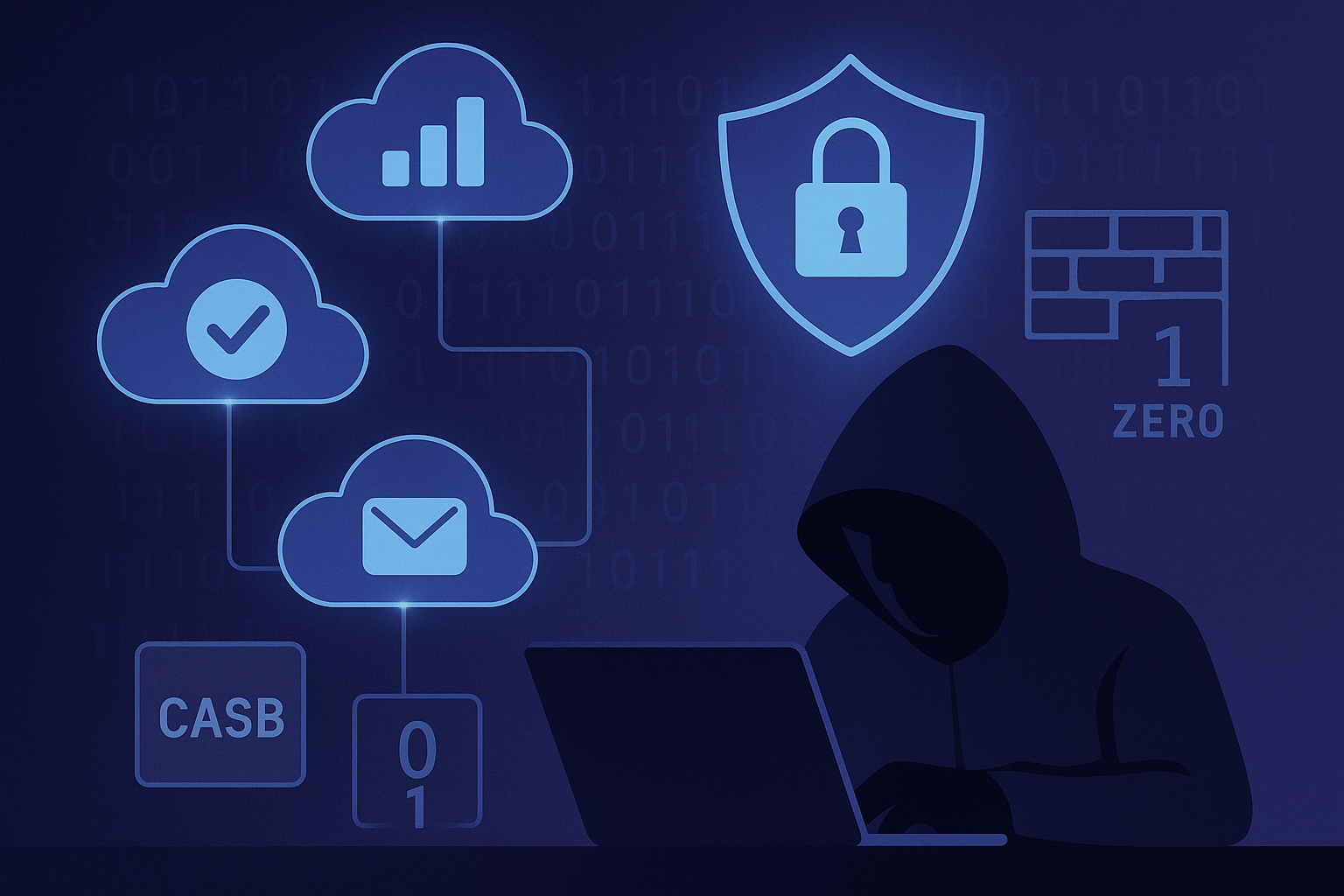Shadow SaaS: The Security Risk Hiding in Your Stack
From design tools to AI assistants, employees today are signing up for cloud-based software faster than IT can approve, or even notice. This growing trend, known as Shadow SaaS, is becoming one of the most overlooked cybersecurity threats in the modern workplace. In this post, we’ll explore what Shadow SaaS is, why it matters, and how businesses can regain control using modern tools like CASB, host-based firewalls, and Zero Trust policies.
What Is Shadow SaaS?
Shadow SaaS refers to software-as-a-service (SaaS) applications used within an organization without being managed, monitored, or even known by the IT or security team.
Employees often introduce these apps with good intentions — to improve productivity or collaboration, but they can create unmanaged access points, expose sensitive data, and undermine your company’s security policies.
Common Shadow SaaS apps include:
-
Google Drive, Dropbox, Box (file sharing)
-
Notion, Trello, Asana (project management)
-
ChatGPT, Grammarly (AI writing tools)
-
Figma, Canva (design platforms)
If these tools aren’t properly vetted, configured, or monitored, they become blind spots in your environment.
Why Shadow SaaS Is a Real Business Risk
When apps bypass your organization’s security controls, several risks emerge:
-
Data Loss or Exposure: Sensitive files may be shared on personal accounts or unencrypted platforms.
-
Compliance Violations: Unapproved apps may not meet industry standards like HIPAA, PCI-DSS, or GDPR.
-
Credential Reuse: Employees may use weak or repeated passwords, making those apps easier to breach.
-
Increased Attack Surface: Shadow apps are not included in patch management or threat monitoring, making them easy targets.
A report from Productiv found that businesses use an average of 254 SaaS apps, but IT is only aware of 45% of them.
How to Detect and Manage Shadow SaaS
Addressing Shadow SaaS starts with visibility and control. Here are the most effective methods:
1. Cloud Access Security Broker (CASB)
CASBs help identify and manage all cloud apps in use — including those that aren’t IT-approved. They sit between users and cloud services, providing visibility and enforcing security policies.
Key benefits:
-
Discover unsanctioned SaaS apps
-
Monitor usage and data movement
-
Block high-risk applications
-
Enforce compliance rules (like DLP or access control)
Popular options: Microsoft Defender for Cloud Apps, Netskope, Palo Alto Prisma Access
2. SentinelOne Firewall Control
If you're using SentinelOne’s Control or Complete license, the built-in host-based firewall feature can help enforce outbound traffic rules at the endpoint level.
If you're protected by ForceNow, you’ll have access to this powerful capability as part of our managed endpoint security solution. We help configure and maintain firewall policies that reduce Shadow SaaS risks, even for remote or hybrid users.
You can:
-
Block specific domains like
drive.google.comordropbox.com -
Apply firewall policies by group or device
-
Control access from remote devices, even outside the corporate network
This feature gives security teams a lightweight but powerful way to reduce shadow SaaS risk directly on the endpoint.
3. Zero Trust Architecture
Zero Trust is built on the idea that no user or application should be trusted by default, even if inside the corporate network.
Best practices include:
-
Verify every access request (user + device)
-
Grant least-privilege access to apps
-
Continuously monitor for abnormal behavior
With Zero Trust, every SaaS app interaction is logged, checked, and controlled, significantly reducing Shadow IT exposure.
What Businesses Can Do Now
Whether you're a growing startup or an established enterprise, Shadow SaaS can creep into your environment unnoticed. Here’s how to take action:
-
Assess your environment: Use CASB or network monitoring to inventory SaaS usage.
-
Talk to teams: Understand why employees are turning to external tools. Sometimes the answer is better enablement.
-
Enforce policies: Make security policies around SaaS clear, and easy to follow.
-
Enable endpoint controls: Tools like SentinelOne Firewall Control can enforce real-time restrictions.
-
Review and repeat: Shadow SaaS isn’t a one-time issue, regular audits are key.
How ForceNow Can Help
ForceNow helps organizations manage cybersecurity risk in a way that’s practical, proactive, and scalable. With deep experience in endpoint protection, MDR, and Zero Trust deployment, our team helps you:
-
Detect and map Shadow SaaS use
-
Implement firewall-based blocking and policy controls
-
Educate teams to reduce accidental risk
-
Establish SaaS governance aligned with your compliance needs
Whether you need help with tool selection or day-to-day security operations, we’re here to simplify and strengthen your cybersecurity.
Shadow SaaS may not show up on a traditional vulnerability scan, but the risks it introduces are real. Unmanaged cloud apps open the door to data exposure, regulatory issues, and reputational damage.
Businesses that take a modern approach, combining visibility, policy, and proactive controls, will be far better positioned to protect their data, users, and brand.

